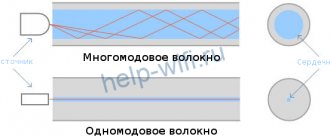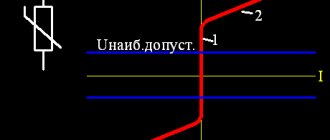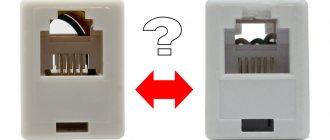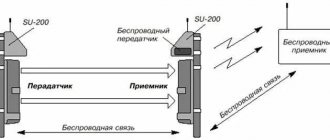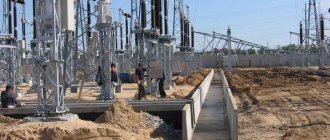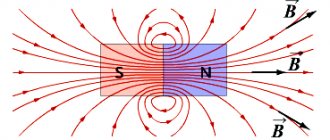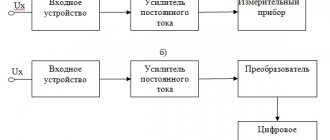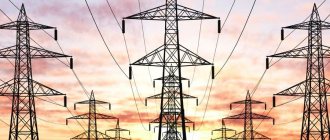Communication lines based on the transmission of information via optical dielectric fibers have become very widespread. Now this is not only the lot of communication providers, but also the possibility of using server and cross-site nodes, outdoor video cameras, etc. for communication between each other.
The note is intended for novice specialists, but the “seasoned” already know everything.
Here, of course, we can immediately highlight a number of advantages of fiber-optic communication lines:
- practically unlimited signal bandwidth (100 Gbit/s is not a question) and long distances (there is no need to remember the 100 m restrictions);
- electromagnetic interference/interference is not harmful and does not affect nearby communication lines;
- the connected equipment is dielectrically isolated from each other;
- high level of line security from unauthorized access (it is quite difficult to “unnoticed” cut into the line for “wiretapping”).
Of course there are also disadvantages:
- fragility of optical fibers;
- installation requires a special tool, which may not be available in the “shop around the corner,” as well as qualified installers (you must follow safety precautions when working);
- heads for a tester “for certification” are not common (usually they are made with a reflectometer, but some manufacturers do not accept such data, although they provide more complete information).
Fibers
The type of optical fibers, as well as their number (of which there are never too many), are the main characteristics of the communication line.
| Characteristic | Multimode fiber OM1* | Multimode fiber OM2* | Multimode fiber OM3 | Multimode fiber OM4 | Single-mode fiber OS2** |
| Core/shell diameter, µm | 62,5/125 | 50/125 62.5/125 (less common) | 50/125 | 50/125 | 9/125 |
| Shell color coding (recommended) | orange | orange | sea wave (aqua) | sea wave (aqua) or magenta | yellow |
| Maximum distance*, m | 1000Base-SX @850nm — 220 1000Base-LX @1310nm — 550 10GBase-SR @850nm — 33 | 1000Base-SX @850nm — 550 1000Base-LX @1310nm — 550 10GBase-SR @850nm — 82 | 1000Base-SX @850nm — 550*** 1000Base-LX @1310nm — 550 10GBase-SR @850nm — 300 40GBase-SR4/100GBASE-SR10 @850nm — 100 | 1000Base-SX @850nm — 550*** 1000Base-LX @1310nm — 550 10GBase-SR @850nm — 400 40GBase-SR4/100GBASE-SR10 @850nm — 150 | 1000Base-LX @1310nm — 5000**** 1000BASE‑BX10 @1310/1500nm- 10000 40GBase-LR4/100GBase-LR4 @1310nm — 10000 |
* Fibers of the OM1 and OM2 types are considered obsolete (implying the use of only LED transmitters), although they still provide data transmission up to 10 Gbit/s, albeit on short lines; ** OS1 type fibers had several varieties and already about 10 years ago, many manufacturers had them corresponding to the current OS2. Currently, OS1 is practically unheard of; *** Manufacturers of SFP modules often claim a longer range - about 1 km; **** Manufacturers of SFP modules often claim a longer range – 10 km.
Small comments on the table:
- Next to the standard, the wavelength is indicated through @. Optical fibers have so-called “transparency windows” in which attenuation is minimal (these are 850 nm, 1310 nm and 1550 nm, but fiber manufacturers do not stand still and increase their number);
- Although there are many cable manufacturers, only a small number of companies produce fiber: the most famous are, of course, Corning (yes, it is their Gorilla Glass that most people know) and Fujikura, but it is worth mentioning also ofs, Hitachi Cable, Sumitomo Electric and Draka NK Cables ;
- OM1-OM4 are the designations for multimode cables adopted in ISO 11801 and they differ from those adopted in the IEC 60793-2-10 and TIA/EIA standards. But basically the designations on the websites of manufacturers and suppliers are indicated precisely in accordance with ISO11801;
- The OM5 type cable appeared (in November 2022), but it is still poorly distributed and how “survivable” it will be is not clear.
Choosing the type of fiber is a complex task, in which, as a rule, there are two participants - the “cable guy” (SCS) and the “networker”, since the price of the line will consist of the cost of the cable line and SFP modules. If multimode fibers are usually used for administrative buildings, then single-mode fibers are used for “long” distances and on the territory of factories. It is according to the selected type of fiber that all other “components” are selected.
Well, from the trash category: over short distances you can use a cable with multimode fibers together with single-mode transmitters and patch cords. But it's better not to do that
